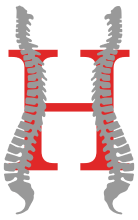Kyphosis is a condition that consists of a forward rounding of the spine. While there is a natural curvature to the spine, kyphosis is a pronounced, abnormal rounding of the back.
Kyphosis: Causes and Effects
Kyphosis occurs when the cylinders that make up the spinal column start to turn into wedge shapes, causing the spine to excessively curve forward.
Those with mild kyphosis normally do not experience problems that distract or interrupt them from their lives and may not seek treatment. Severe kyphosis can be noticeably disfiguring and cause back pain and stiffness. Those with severe kyphosis may experience body image problems and decreased appetite due to the misalignment of the spine, in addition to stiffness and chronic back pain.
In young people, kyphosis can be caused by birth defects or diseases that affect musculoskeletal growth. In adults, kyphosis is most frequently caused by disc degeneration, some cancers, and osteoporosis.





